Thingiverse

investigation of salt annealing of transparent pla parts chapter II by Dr_Froggy_rD
by Thingiverse
Last crawled date: 3 years, 4 months ago
Hi everybody,
The second chapter about getting a quasi transparent part from a 3d printed /FDM object by remelting the part immersed in salt. Also described as annealing or sintering.
My first thought was how to sinter the pla in a very viscous liquid without reaction possible. Therefore I came to the idea of silicon oil or wax.
Making a negative mold of the form....
Not very convincing at all.
Even heat polishing with a heat gun the surface with silicon oil applied...resulted in an art of frying the pla... not great.
So I reconsidered this. I thought instead if I can coat the surface to avoid direct contact of the salt with pla and if I can use a sacrificial coating that can be easily removed.
Therefore, I tried a commercial pva glue for wood (pattex) but I believe other brands like from uhu will do the job as well. I tried pvp too but was not successfull (however I believe this should work too).
As one can see on one picture with three dices and annotations, some calibration dices were coated on three consecutives sides. Let to dry and recoated. Once dried, immersed in salt as on chapter one explained.
Then heated to 185°C for about 2 hours. Took out from the oven and cooled down fast.
Once cooled the dices are recovered by immersing in water. Using purum ethanol and brushing with a toothbrush allowed to remove the sacrificial coating left over.
However, the coating at those temperatures turns to caramel kind of.
One can see frost like faces (blue arrows) and mostly clear faces.
As I obtained encouraging results, I carried out the experiment on fully coated dices (I heat fused a left over pla filament on one edge forming a hook at its other end to be able to manipulate the dice and coat it completely. Drying by hanging over a string)
Then I performed the same procedure immersion in salt at 170°C only for to hours. Then cooling down , removing the salt and the coating (water and purum ethanol).
The dices obtained are pretty transparent!
The process still needs to be improved... nevertheless, it can be now further improved by any of you! This show one way to go!
I expevt anybody to perform a lense with this methodd!
In my case, not having 100%infill is a killing criterion, I observe a lot of bubbles!
Also the material flow and temperature of extrusion.! It must avoid entrapping any air!
Maybe another brand for the coating do not caramelize, or fries....
The salt fineness?
Using an inert coating is important but it must be easily removable.
Remelted Pla is prone to colouration.
NOTA: a dummy object is included to be able to publish this!
The second chapter about getting a quasi transparent part from a 3d printed /FDM object by remelting the part immersed in salt. Also described as annealing or sintering.
My first thought was how to sinter the pla in a very viscous liquid without reaction possible. Therefore I came to the idea of silicon oil or wax.
Making a negative mold of the form....
Not very convincing at all.
Even heat polishing with a heat gun the surface with silicon oil applied...resulted in an art of frying the pla... not great.
So I reconsidered this. I thought instead if I can coat the surface to avoid direct contact of the salt with pla and if I can use a sacrificial coating that can be easily removed.
Therefore, I tried a commercial pva glue for wood (pattex) but I believe other brands like from uhu will do the job as well. I tried pvp too but was not successfull (however I believe this should work too).
As one can see on one picture with three dices and annotations, some calibration dices were coated on three consecutives sides. Let to dry and recoated. Once dried, immersed in salt as on chapter one explained.
Then heated to 185°C for about 2 hours. Took out from the oven and cooled down fast.
Once cooled the dices are recovered by immersing in water. Using purum ethanol and brushing with a toothbrush allowed to remove the sacrificial coating left over.
However, the coating at those temperatures turns to caramel kind of.
One can see frost like faces (blue arrows) and mostly clear faces.
As I obtained encouraging results, I carried out the experiment on fully coated dices (I heat fused a left over pla filament on one edge forming a hook at its other end to be able to manipulate the dice and coat it completely. Drying by hanging over a string)
Then I performed the same procedure immersion in salt at 170°C only for to hours. Then cooling down , removing the salt and the coating (water and purum ethanol).
The dices obtained are pretty transparent!
The process still needs to be improved... nevertheless, it can be now further improved by any of you! This show one way to go!
I expevt anybody to perform a lense with this methodd!
In my case, not having 100%infill is a killing criterion, I observe a lot of bubbles!
Also the material flow and temperature of extrusion.! It must avoid entrapping any air!
Maybe another brand for the coating do not caramelize, or fries....
The salt fineness?
Using an inert coating is important but it must be easily removable.
Remelted Pla is prone to colouration.
NOTA: a dummy object is included to be able to publish this!
Similar models
thingiverse
free

investigation of salt annealing of transparent pla parts chapter III by Dr_Froggy_rD
...omes at some point.
nota first scorchcad android i made as dummy stl for the fun ... as nothing can be published without a stl...
thingiverse
free

investigation of salt annealing of transparent pla parts chapter I by Dr_Froggy_rD
...omes at some point.
nota first scorchcad android i made as dummy stl for the fun ... as nothing can be published without a stl...
thingiverse
free

Hot Water Heater Element Removal Tool by jawebb
...d protopasta htpla and anneal in an over @ 200 degrees fahrenheit for 20 minutes on the oven rack. let it cool and start turning.
thingiverse
free

prototype planoconvex lens with a customisable lens curvature for being processee by the sacrificial coat & annealing salt method by Dr_Froggy_rD
...free of salt frost effect but the bubbles inside affects the lens...
maybe some will be more successful
best regards
dr_froggy_rd
thingiverse
free

Dice tray for dice towers by Vandhanen
...so i made a "lose fit" tray so it can be removed when a dice rests in the tower. the tray fits the tower in 2500% sice.
thingiverse
free

Chinese Dice by Tatinc2000
...ge, it pretty cool. anyway, he always plays dice with us and we all have custom dice so i made one with chinese writing for him.
thingiverse
free

Silicone Auto Nozzle Cleaner by Taumelscheibe
...holder is also a strain relief for the heatbed cable.
the freecad files are included so you can modify the parts for your printer
thingiverse
free

Sons Of The Phoenix Chapter Dice by PWDawgy
...enix" chapter icon.
next steps are to add a spherical void in the middle to add a ball bearing to give the dice some weight.
thingiverse
free
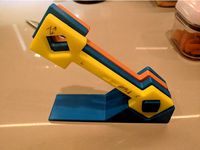
Dimensional thermal test jig (for annealing) by punkgeek
...hat was easy to test in my oven (and i only needed my parts to survive in a super hot car - which the internet says is about 75c)
thingiverse
free

Urethane Molds by joeserdynski
...at room temperature and molds for molds can be thin walled. pla dissolving makes life very easy and complex designs can be made.
Froggy
turbosquid
$25

Froggy
...id
royalty free 3d model froggy for download as fbx and gltf on turbosquid: 3d models for games, architecture, videos. (1691687)
3d_export
free

Froggy
...froggy
3dexport
3ddd
$1

Lucide FROGGY 77272-03-85
...roggy
артикул - 77272/03/85
цвет - зеленый
цоколь - e14
длина см - 71
ширина см - 21
высота см - 15,5
арматура - металл, зеленый
3ddd
$1

Горшок детский Fisher-Price Froggy Potty
...fisher-price froggy potty
3ddd
горшок , лягушка
горшок детский fisher-price froggy potty
turbosquid
$15

Lucide Froggy 77272-03-85
... available on turbo squid, the world's leading provider of digital 3d models for visualization, films, television, and games.
archive3d
free

Sconce 3D Model
...sconce 3d model archive3d sconce lamp-bracket lantern sconce lucide froggy n150217 - 3d model (*.gsm+*.3ds) for interior 3d...
thingiverse
free

froggy by caractere
...froggy by caractere
thingiverse
froggy
thingiverse
free

Froggy by Gustafson_k
...froggy by gustafson_k
thingiverse
rainforest cafe frog
unity_asset_store
$5

Froggy Chairs
... your workflow with the froggy chairs asset from meowvorty. find this & other furniture options on the unity asset store.
thingiverse
free

Froggy Chair by ZachHanze
...froggy chair by zachhanze
thingiverse
the froggiest chair.
Annealing
3d_export
$10

automatic enameled wire conveyor line
...g, labeling, weighing, scanning, palletizing, conveying, etc. enameled wire scheme, please use solidworks 2012 and above to open!
3d_export
$49

drawing of 3x2x15m full fiber trolley resistance furnace
...resistance furnace. it is a special equipment for quenching, annealing normalizing and tempering of metal products in natural atmosphere,...
thingiverse
free

Induction Annealer by Russ10
...n annealer by russ10
thingiverse
these are the 3d printed parts used in making an auto feeding induction annealer. more info at:
thingiverse
free

Case Annealer Heat Sink Prototype by bigblack
...case annealer heat sink prototype by bigblack
thingiverse
the last picture is of the final product turned on a lathe
thingiverse
free

Dimensional thermal test jig (for annealing) by punkgeek
...hat was easy to test in my oven (and i only needed my parts to survive in a super hot car - which the internet says is about 75c)
3dfindit
free

DIN 315 - annealed cast iron, zinc-plated (A2K), blue passivated
...din 315 - annealed cast iron, zinc-plated (a2k), blue passivated
3dfind.it
catalog: wuerth
thingiverse
free

Annealing Tube Clip for Charmilles 290F/330F by cudakid03
...old our larger tubes in the retracted position and added a counterbore on the back side to clear the nutsert on the 330f machine.
thingiverse
free

Brass Annealing Station by msgbean
...ation dimensions to bend the cartridge holder and added a misc. parts list.
updated 1/21/21: added a drum drawing for dimensions.
thingiverse
free

prototype planoconvex lens with a customisable lens curvature for being processee by the sacrificial coat & annealing salt method by Dr_Froggy_rD
...free of salt frost effect but the bubbles inside affects the lens...
maybe some will be more successful
best regards
dr_froggy_rd
thingiverse
free

Nema 17 driven cartridge case feeder for an induction annealer by wombatordnance
...r and a way to drive it. (you could fit another motor using an adapter with a nema 17 flange, i might draw one up and upload it.)
Investigation
3d_ocean
$4

Magnum Bullet
...magnum bullet 3docean ammunition bullets fire firearm gun hunting investigation magnum model pellet projectile shooting weapon model of...
3d_export
$7

research station kristalise
...station kristalise 3dexport big scientific spacestation, for deep space investigation which is a homeworld for a lot of staff...
3d_export
$90

London City Hall 3D Model
...hall uk police landmark united kingdom vacation holiday britain investigation administrative building law british london city hall 3d model...
3d_export
$70

New Scotland Yard 3D Model
...city uk police landmark united kingdom vacation holiday britain investigation administrative building law british new scotland yard 3d model...
3d_ocean
$5

DeerStalker Cap
...onal headgear of budding investigators! 3d model was made in blender and includes dae file, obj file, uv map, ao map and norma...
3d_export
$200

London building collection 3D Model
...city uk police landmark united kingdom vacation holiday britain investigation administrative building law british london building collection 3d model...
3d_export
$10

Magnifying glass 3D Model
...pe magnification magnifier magnifying object optical research search tool zoom
magnifying glass 3d model vitamares 29221 3dexport
3d_ocean
$16

Bullets
...crime damage death element engrave explosives fight firearm gun investigation metal model penetration pistol powder primer reflection rifle robbery...
3d_export
$10

spacecraft stork
...small spacecraft; • research of problems of microgravity; • investigation of the behavior of high-speed mechanical particles of natural...
3d_export
$5

Knoll High Sticking Chair
...was set up and, fueled by mutual optimism, the investigation began.<br>“everything i’ve always done has been a reaction against...
Chapter
3d_export
$5

elm tree
...elm tree 3dexport name: magnolia tree -** 4 chapter** ...
3ddd
$1

Sicis ANASTASE
...3ddd sicis кресло sicis anastase из коллекции next art chapter ...
3ddd
$1

Sicis JULIEN L'ARGENTIER
...sicis julien l'argentier 3ddd sicis sicis next art chapter 220 x 100 x 82...
3d_export
$150

6 location fitting machines production auto-loading chapter 6 circulating film labeling machine 3d
... structures, and mechanism novelty. currently, the six-station cycle fitting machine is producing stable products in the factory.
3d_export
$14

medieval glaive
...i saw it for the first time in a chapter of friends, i was interested in the type of...
3d_export
$15

jebediah springfield tongue
...springfield language. it is the same from the simpsons chapter it is made in blender 2.90, rendered in cycles....
cg_studio
$99

Arthurian Environmental Set3d model
...set3d model cgstudio perspectx arthurian environment set fantasy salisbury chapter house historical .obj .max .mb .lwo .fbx .c4d .3ds...
3d_ocean
$19

Gothic Church
...gothic church 3docean architectural building cathedral chapel chapter church exterior god gothic historic house medieval religion lowpoly...
3d_ocean
$2

Islamic Calligraphy Wooden Frame
...pattern of arabic/islamic art, fitting the 15 words of chapter 112 of the quran (al-ikhlas) perfectly in a square...
3d_export
$6

ocean jet 8
...jet 8 3dexport a model made for the corresponding chapter of the maritime accidents series, which includes the report...
Rd
design_connected
free

RDS 1
...rds 1
designconnected
free 3d model of rds 1 by bonacina pierantonio designed by dordoni, rodolfo.
turbosquid
$10

RD Binoculars
... available on turbo squid, the world's leading provider of digital 3d models for visualization, films, television, and games.
turbosquid
$5

Chairs Rd
... available on turbo squid, the world's leading provider of digital 3d models for visualization, films, television, and games.
cg_studio
$30

Bass Gibson RD Custom3d model
...son rd custom instruments
.max - bass gibson rd custom 3d model, royalty free license available, instant download after purchase.
turbosquid
$26

RZR RD Concept Phone
...
royalty free 3d model rzr rd concept phone for download as on turbosquid: 3d models for games, architecture, videos. (1322227)
turbosquid
$10

Atomic Bomb RDS-1
...uid
royalty free 3d model atomic bomb rds-1 for download as on turbosquid: 3d models for games, architecture, videos. (1270251)
3d_export
$5

revers rds radio plug
...revers rds radio. for cars e30 e34 e36 radio. printed abs layer 0.06 on the left - a standard plug, on the right - a printed one.
turbosquid
$20

Bass Gibson RD Custom
... available on turbo squid, the world's leading provider of digital 3d models for visualization, films, television, and games.
turbosquid
$33

Temsa Safari RD tourist bus
...model temsa safari rd tourist bus for download as max and obj on turbosquid: 3d models for games, architecture, videos. (1423776)
3ddd
$1

Faber. BIOS EG6 RD/XS F32
...6 rd/xs f32.
5840 полигонов.
wall mounted range hood faber bios eg6 rd/xs f32.
5840 polygons.
file: max 2010, 2012; fbx; obj.
Salt
3d_export
$5

salt lamp
...salt lamp
3dexport
salt lamp
turbosquid
$20

Salt
...lt
turbosquid
royalty free 3d model salt for download as 3ds on turbosquid: 3d models for games, architecture, videos. (1635134)
turbosquid
$16

Salt
...lt
turbosquid
royalty free 3d model salt for download as max on turbosquid: 3d models for games, architecture, videos. (1187289)
turbosquid
$12

Salt
...
royalty free 3d model salt for download as max, fbx, and obj on turbosquid: 3d models for games, architecture, videos. (1559506)
turbosquid
free

Salt
... available on turbo squid, the world's leading provider of digital 3d models for visualization, films, television, and games.
3d_ocean
$8

Salt and pepper cellar
...salt and pepper cellar
3docean
castor cellar pepper pepper box salt salt and pepper cellar
high poly salt and pepper cellar.
3ddd
$1

Bretz SALT A125
...bretz salt a125
3ddd
bretz , salt
bretz salt a125 w93 d93 h90
3d_ocean
$6

Salt and Pepper Shakers
...and pepper shakers
3docean
condiments pepper restaurant salt shakers spices tableware
typical restaurant salt and pepper shakers.
turbosquid
free

Salt shaker
...bosquid
free 3d model salt shaker for download as lwo and obj on turbosquid: 3d models for games, architecture, videos. (737770)
turbosquid
$15

Croissant salt
...alty free 3d model croissant salt for download as lwo and obj on turbosquid: 3d models for games, architecture, videos. (1268493)
Dr
design_connected
$16

Dr. Yes
...dr. yes
designconnected
kartell dr. yes computer generated 3d model. designed by starck, philippe.
3ddd
$1

kartell dr. glob
...kartell dr. glob
3ddd
kartell
kartell dr. glob
3d_export
$10

Dr Fate
...dr fate
3dexport
stl for print
turbosquid
$30

Dr. Feelgood
... available on turbo squid, the world's leading provider of digital 3d models for visualization, films, television, and games.
turbosquid
$24

Dr Spark
... available on turbo squid, the world's leading provider of digital 3d models for visualization, films, television, and games.
turbosquid
$1

Dr No Octofuzz
... available on turbo squid, the world's leading provider of digital 3d models for visualization, films, television, and games.
turbosquid
$1

Dr No MadFly
... available on turbo squid, the world's leading provider of digital 3d models for visualization, films, television, and games.
turbosquid
$1

Dr No Kafuzz
... available on turbo squid, the world's leading provider of digital 3d models for visualization, films, television, and games.
cg_studio
$18

Dr Sonderbar3d model
...design chair designer dr sonderbar
.max - dr sonderbar 3d model, royalty free license available, instant download after purchase.
3ddd
$1

agape dr
...agape dr
3ddd
agape , ванна
agape bionic models
Transparent
3ddd
$1

Citco Transparence
... transparence , панель
итальянские стеновые панели citco коллекция transparence
design_connected
$13

Transparent Barstools
...transparent barstools
designconnected
transparent barstools computer generated 3d model.
design_connected
$13

Transparent chair
...transparent chair
designconnected
transparent chair computer generated 3d model.
3d_ocean
$5

Transparent Bottle
...-cancer bottle cap container eating full glass healthy isolated liquid oil olive seasoning transparent white
a transparent bottle
design_connected
$13

Small Transparent Speaker
...small transparent speaker
designconnected
transparent sound small transparent speaker computer generated 3d model.
turbosquid
$19

Transparent curtains
...oyalty free 3d model transparent curtains for download as max on turbosquid: 3d models for games, architecture, videos. (1459924)
3d_export
$5

transparent mug
...transparent mug
3dexport
turbosquid
$20

Transparent Lock
...e 3d model transparent lock for download as max, fbx, and obj on turbosquid: 3d models for games, architecture, videos. (1672714)
turbosquid
$15

Transparent Chair
... available on turbo squid, the world's leading provider of digital 3d models for visualization, films, television, and games.
turbosquid
$10

Silo Transparent
... available on turbo squid, the world's leading provider of digital 3d models for visualization, films, television, and games.
Ii
3d_ocean
$5

inoplanet II
...inoplanet ii
3docean
3ds arman3dg games ii inoplanet low max poly trees
inoplanet ii
3ddd
$1

Novecento II
...novecento ii
3ddd
консоль
консоль: ii novecento
дизайнер: elia monterosso
3ddd
$1

Спальня VENERO II
...d
venero ii , venero , hulsta
спальня venero ii
3ddd
$1
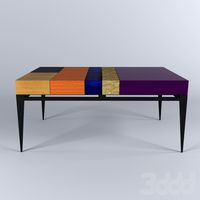
PROPORTION II
...proportion ii
3ddd
malabar emotional
консоль proportion ii
malabar emotional design
коллекция euphoria
3ddd
$1
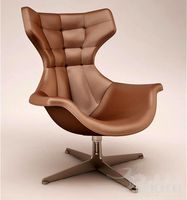
Regina II
...ltrona frau , капитоне
this is a custom version of the poltrona frau regina ii armchair.
3d_export
$119

cinderella ii
...cinderella ii
3dexport
3d_export
$119

lara ii
...lara ii
3dexport
3d_export
$119

doris ii
...doris ii
3dexport
3ddd
$1
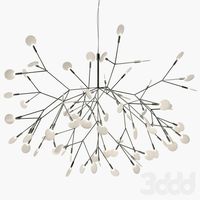
Heracleum II
...s endless technical possibilities,
making this new version much more efficient while providing unique and sparkling illumination.
3ddd
$1
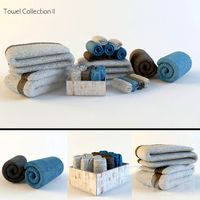
Towel Collection II
...towel collection ii
3ddd
полотенце
towel collection ii
Pla
turbosquid
$20

'Plas" Table Lamp
... 'plas" table lamp for download as max, obj, and fbx on turbosquid: 3d models for games, architecture, videos. (1277537)
turbosquid
$400

PLA Chinese Soldier artillerymen
...3d model pla chinese soldier artillerymen for download as max on turbosquid: 3d models for games, architecture, videos. (1668792)
turbosquid
$400

PLA Chinese Soldier navy
...ty free 3d model pla chinese soldier navy for download as max on turbosquid: 3d models for games, architecture, videos. (1668787)
turbosquid
$250

PLA Chinese Soldier 01
...alty free 3d model pla chinese soldier 01 for download as max on turbosquid: 3d models for games, architecture, videos. (1668799)
turbosquid
$250

PLA Chinese Soldier 06
...alty free 3d model pla chinese soldier 06 for download as max on turbosquid: 3d models for games, architecture, videos. (1668809)
turbosquid
$250

PLA Chinese Soldier 05
...alty free 3d model pla chinese soldier 05 for download as max on turbosquid: 3d models for games, architecture, videos. (1668807)
turbosquid
$250

PLA Chinese Soldier 03
...alty free 3d model pla chinese soldier 03 for download as max on turbosquid: 3d models for games, architecture, videos. (1668804)
turbosquid
$200

PLA Chinese Soldier 02
...alty free 3d model pla chinese soldier 02 for download as max on turbosquid: 3d models for games, architecture, videos. (1668803)
turbosquid
$100

PLA Chinese Soldier 74
...alty free 3d model pla chinese soldier 74 for download as max on turbosquid: 3d models for games, architecture, videos. (1668839)
turbosquid
$100

PLA Chinese Soldier 71
...alty free 3d model pla chinese soldier 71 for download as max on turbosquid: 3d models for games, architecture, videos. (1668829)
Parts
3d_export
$5

Parts
...parts
3dexport
parts
3d_export
$5

Part
...part
3dexport
part
3d_export
$5

Part
...part
3dexport
machine part
3d_export
$65
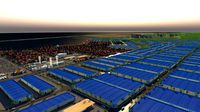
Part
...part
3dexport
simple rendering of the scene file
3d_export
$65
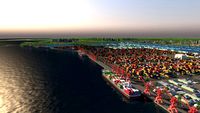
Part
...part
3dexport
simple rendering of the scene file
3d_export
$30

fan part
...fan part
3dexport
this is a part of fan of pedastal
3d_export
$10

machine parts
...machine parts
3dexport
3d part modeling work ,contact for 3d work
turbosquid
$59

Mechanical Part
...id
royalty free 3d model mechanical part for download as c4d on turbosquid: 3d models for games, architecture, videos. (1410833)
turbosquid
$17

Road parts
...bosquid
royalty free 3d model road parts for download as 3ds on turbosquid: 3d models for games, architecture, videos. (1192967)
turbosquid
$9

Cutter Parts
...squid
royalty free 3d model cutter parts for download as stl on turbosquid: 3d models for games, architecture, videos. (1220010)
